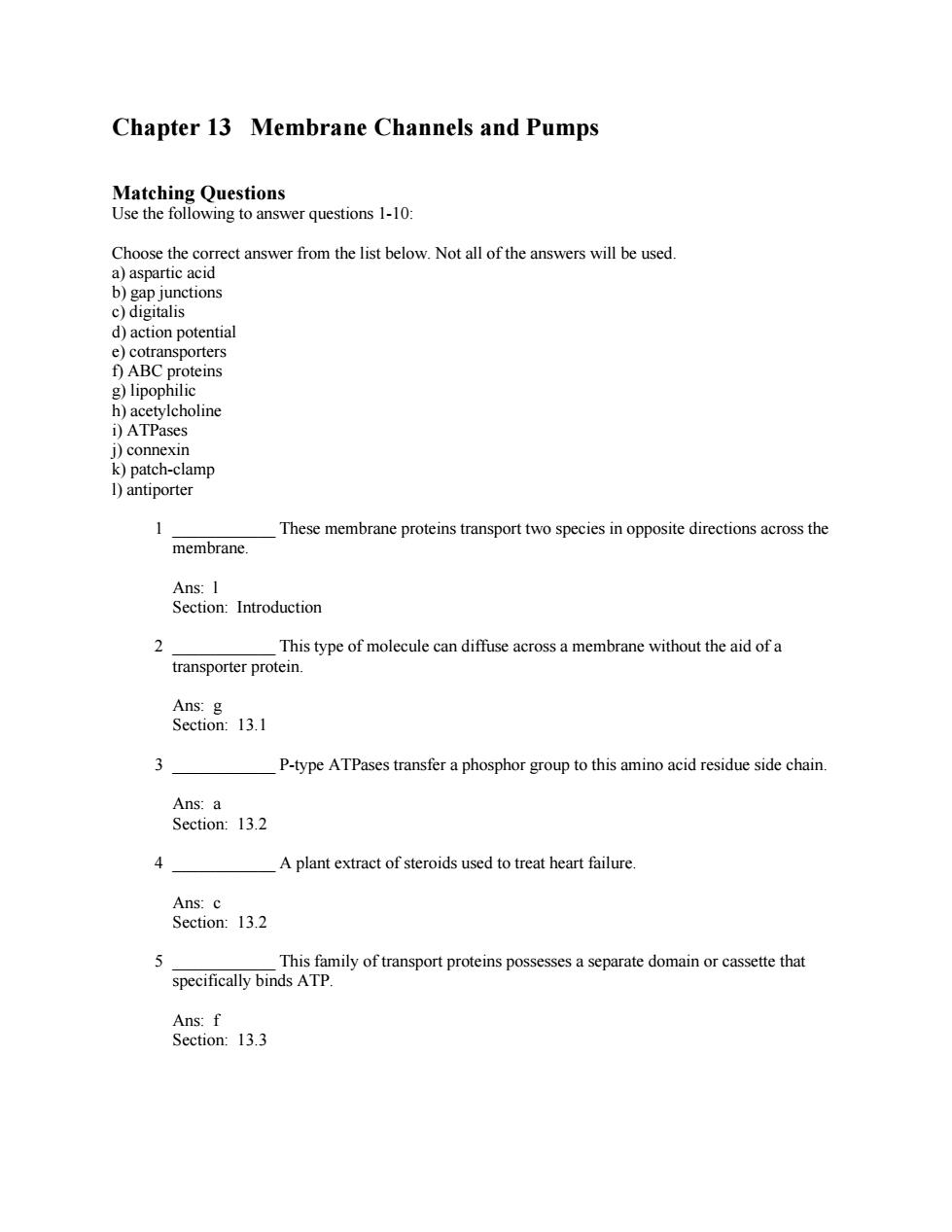正在加载图片...

Chapter 13 Membrane Channels and Pumps Matching Questions Use the following to answer questions 1-10: Choose the correct answer from the list below.Not all of the answers will be used a)aspartic acid b)gap junctions c)digitalis d)action potential e)cotransporters f)ABC proteins g)lipophilic h)acetylcholine i)ATPases j)connexin k)patch-clamp 1)antiporter 1 These membrane proteins transport two species in opposite directions across the membrane. Ans:I Section:Introduction 2 This type of molecule can diffuse across a membrane without the aid of a transporter protein. Ans:g Section:13.1 3 P-type ATPases transfer a phosphor group to this amino acid residue side chain. Ans:a Section:13.2 A plant extract of steroids used to treat heart failure. Ans:c Section:13.2 This family of transport proteins possesses a separate domain or cassette that specifically binds ATP. Ans:f Section:13.3Chapter 13 Membrane Channels and Pumps Matching Questions Use the following to answer questions 1-10: Choose the correct answer from the list below. Not all of the answers will be used. a) aspartic acid b) gap junctions c) digitalis d) action potential e) cotransporters f) ABC proteins g) lipophilic h) acetylcholine i) ATPases j) connexin k) patch-clamp l) antiporter 1 ____________ These membrane proteins transport two species in opposite directions across the membrane. Ans: l Section: Introduction 2 ____________ This type of molecule can diffuse across a membrane without the aid of a transporter protein. Ans: g Section: 13.1 3 ____________ P-type ATPases transfer a phosphor group to this amino acid residue side chain. Ans: a Section: 13.2 4 ____________ A plant extract of steroids used to treat heart failure. Ans: c Section: 13.2 5 ____________ This family of transport proteins possesses a separate domain or cassette that specifically binds ATP. Ans: f Section: 13.3